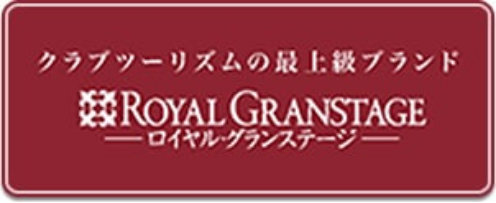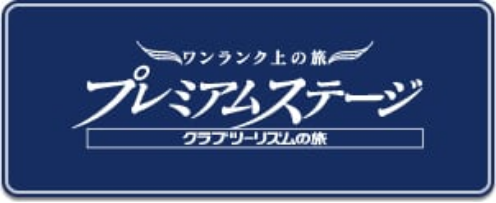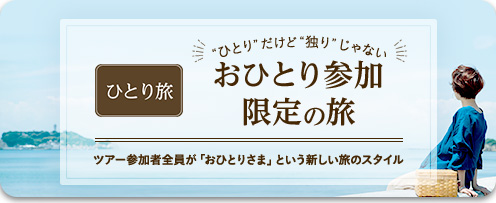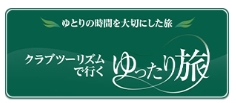Kamakura, the true face of the city of samurai | Kamakura travel and tours | Tourist attractions


Click here for tourist information on Kamakura! We introduce the true face of Kamakura, the capital of samurai. You can easily search for and book tours on Club Tourism website.
-
A "mosaic town" where Cultures overlap
-
[Kamakura Period] Foreign Culture captivated the people Kamakura, from Samurai to commoners
-
[Edo Period] Why did the ruined Kamakura come into the spotlight after the collapse of the shogunate?
-
[Meiji Period] From a sanatorium to a resort Kamakura Culture beloved by Overseas Travel
-
[Taisho Period] Modern Kamakura protected by the Culture citizens of literary figures enthralled by Kamakura
-
Recommended spots to stop by on your stroll around Kamakura
I'm sure you'll find my journey fascinating.
Kamakura: The True Face of the Samurai Capital

Photo courtesy Tsurugaoka Hachimangu Shrine

Izumi Osawa
Kamakura History and Culture Exchange Center Curator Izumi Osawa
He left Waseda Daigaku Daigaku Graduate School of Letters after earning a doctoral degree in Japan history. He is currently a curator at the Kamakura Museum of History and Culture. He specializes in medieval Japan history, with a particular focus on the history of the local community and the city of Kamakura during Kamakura period.
A "mosaic town" where Cultures overlap
At the end of the 12th century, Kamakura, the capital of the warrior government (shogunate) established by Minamoto no Yoritomo, was a cutting-edge town that quickly adopted the culture of China, which had once led Asia. Later, during the Edo period, Kamakura became known as a tourist destination, and after the Meiji era, as a resort area. However, the foundation of Kamakura's culture has always been rooted in warrior traditions, such as those represented by Tsurugaoka Hachimangu Shrine. Mr. Osawa says, "Kamakura, which is formed by the layering of various historical cultures, is also called a town of mosaics. Knowing the characteristics of each era makes strolling through Kamakura even more enjoyable," and he first talked about the surprising aspects of the Kamakura warriors who supported the Kamakura shogunate.

Tsurugaoka Hachimangu Shrine (Image)
During Kamakura period, Tsuruoka Hachimangu Shrine was established in Kamakura as the guardian deity of the samurai government. Tsurugaoka Hachimangu Shrine, which has long been loved by warriors and intellectuals, Tsuruoka Hachimangu Shrine remains one of the symbols of Kamakura and is still bustling with many worshippers.
[Kamakura Period] Foreign Culture captivated the people Kamakura, from Samurai to commoners
Kamakura was a city of warriors where the military government, known as the Shogunate, was established by Yoritomo. In the latter half of the 12th century, Kamakura engaged in trade with the Song Dynasty in China, which was a leading world power at the time. The Chinese culture introduced from the Song period was appreciated by people of all social statuses.
[Curator Osawa gives an explanation!]
It is said that Wakamiya Oji-oji, which runs from the sea to Tsuruoka Hachimangu Shrine, was once lined with the estates of powerful samurai. The samurai not only used celadon and white porcelain from China as everyday tableware but also admired celadon vases and ornaments as treasured items. They embraced the latest trends in Chinese culture by practicing the tea ceremony, which was introduced from the Song Dynasty. Observing the intricately crafted celadon ware allows you to imagine a different side of the samurai, one that contrasts with their battle-ready image.

Celadon bowl with lotus petal design, white porcelain bald-mouth plate, excavated from ruins around Wakamiya Oji oji / Kamakura City Kaisho of Education (image)

White porcelain four-mimi jar Okura Excavated from ruins around the Shogunate/ Kamakura City Commissioner of Education Kaisho Storehouse (image)
In Kamakura, many pieces of celadon and white porcelain from mainland China have been excavated. The excavations have been conducted at various locations, and while these items were highly valued as treasures by Samurai, they were also loved by common people as tableware for everyday use.

Kakuonji Temple (Image provided by Kakuonji Temple)
At the time, Chinese Culture was close at hand in the city of Kamakura, and the teachings of Zen Buddhism, which originated in the Song Dynasty, were widely supported. Although it is a Shingon Buddhist temple, Kakuon-ji Temple has been influenced by the simple yet powerful influence of Zen Buddhism, and it is Ozawa 's top recommendation. After walking through the tranquil grounds surrounded by nature, you will be sobered by the sharp gaze of the Junishin Generals that you will encounter in Hondo.
[Edo Period] Why did the ruined Kamakura come into the spotlight after the collapse of the shogunate?
After the fall of the Shogunate, in the Muromachi era, the entire town of Kamakura ran out of funds as it lost its political centripetal force. Tsuruoka Hachimangu Shrine was protected as the symbol of the town, but other shrines and temples must have been in a very difficult situation. As the entire town fell into disrepair, Kamakura the capital of the samurai class, Mito Mitsukuni, the "Yellow Gate of Mito", turned his attention back to the town. Mitsukuni compiled a geographical journal called "Shinpen Kamakura shi" which included Jisha of Kamakura, treasures, and a discussion of Azuma mirrors. The "Shinpen Kamakura Zhi" was widely disseminated, especially among the samurai and intellectuals of the Edo period, which has its roots in Kamakura Bushi, and Kamakura became widely known to the public as basic information for sightseeing. And Kamakura was transformed from a political center to a tourist destination where former samurai Bunka families still remain.
[Curator Osawa gives an explanation!]
Kamakura was often used as the setting for plays at that time, and it is believed that ordinary people visited the city as if they were touring filming locations. The appearance of tourists may not be much different from today, visiting location of stories with friends and buying popular souvenirs.

(Reprinted from the National Diet Library website)
Mito Based on the "Shinpen Kamakura-shi" compiled by Mitsukuni, many maps of Kamakura and famous places were published. Kamakura Meisho Zue" were like today's sightseeing guidebooks, and were distributed at teahouses in Edo and Kamakura, and were popular among the general public.
[Meiji Period] From a sanatorium to a resort Kamakura Culture beloved by Overseas Travel
In an era when swimming in the sea was believed to cure various ailments, Kamakura 's Shichirigahama came into the spotlight as a place to recover. Kaihin-in, a facility originally built for the purpose of recuperation, was transformed into a seaside hotel and soon became a sort of guesthouse bustling with Overseas Travel. Overseas Travel were drawn to the atmosphere of the ancient capital that remained in Kamakura, and one of the most popular attractions was the Great Buddha of Takatoku. Like Tsuruoka Hachimangu Shrine, the Great Buddha of Kotoku-in was also built in Kamakura at the behest of Takatoku no Yoritomo. Samurai culture has changed form with the times and continues to be loved to this day.
[Curator Osawa gives an explanation!]
The exotic charm of the 11-meter-high Great Buddha is truly exotic culture itself to Westerners. The Kaihin Hotel had foreign-language guidebooks available, making the town easy to visit for foreigners, which is another reason Kamakura why it became so popular as a resort destination.

Postcard "View Kaigan Kamakura Kaihin Hotel" (owned by Kamakura City Central Library)
This seaside hotel was transformed from a resort facility for swimming in the sea into a hotel. It is a Western-style building that is said to have been expanded by Josiah Conder, who is said to have laid the foundations for Japanese architecture after the Meiji period, and its clientele was mainly foreigners.

Great Buddha (Image)
The Great Buddha of Kamakura is characterized by its leaning forward posture, influenced by Chinese Culture that was popular during Kamakura period. Although the Buddha sits outside and is constantly exposed to the elements, it has undergone repeated large-scale restorations and reconstructions whenever it deteriorates, and it continues to be loved by tourists from both Japan and abroad, both today and in the past.
[Taisho Period] Modern Kamakura protected by the Culture citizens of literary figures enthralled by Kamakura
Kamakura has been visited by writers such as Masaoka and Natsume Soseki since the Meiji period. Attracted by the ancient capital atmosphere that remains in the town, many literary figures, including Kume Masao, made Kamakura their base during the Taisho period. Writers living in Kamakura were called "Kamakura writers," and gradually a community of literary figures was formed. Writers who loved Kamakura also worked hard to revitalize the town with events such as Kamakura Carnival, and in times of disaster, they worked with zaibatsu to invest in Culture to protect them, and campaigned with citizens against housing Kaihotsu, creating an environment in which the power of the citizens could protect and promote Kamakura as a city of Culture.
[Curator Osawa gives an explanation!]
Literary figures who loved culture had a deep attachment to the ancient capital of Kamakura, and worked with the citizens to protect Kamakura. Examples of Kamakura culture that were preserved through human power include Tsuruoka Hachimangu Shrine, which continued to be protected by those in power even after the collapse of Kamakura Shogunate, and the Great Buddha Takatoku, which was repeatedly rebuilt with funds raised. Behind Kamakura Culture, which is like a mosaic where culture of various eras overlap, are the feelings of the people who loved Kamakura, the ancient capital of the samurai.

(Photo courtesy of Kamakura Museum of Literature)
At the Kamakura Museum of Literature, which retains the atmosphere of a former villa area, you can learn about the real faces of writers through their lives, as well as their literary works. Surrounded by mountains on three sides and overlooking the sea in the distance, this is a typical Kamakura atmosphere, so why not take a moment to reflect on the Kamakura of the past?
Recommended spots to stop by on your stroll around Kamakura
Hasedera Temple

Hasedera Temple, a flower pure land that colors the early summer of Kamakura (Photo provided by Hasedera Temple)
Hasedera Temple, known as "Kamakura's Western Paradise," is filled with flowers throughout the year, and in early summer, the hydrangeas in full bloom are a delight to the eyes. This is a spot worth visiting to experience the beauty that can only be experienced at this time of year while taking in the views of the sea and cityscape of Kamakura.
Kamakura History and Culture Exchange Center

For those who want to learn more about Kamakura 's history (Photo courtesy of Kamakura Museum of History and Culture)
Ozawa The Kamakura History Culture Exchange Center, curated by Mr. , is a great place to learn more about the history of Kamakura and Culture. In particular, the permanent Eifuku temple VR is a must-see. Looking at the Eifuku temple in front of you, which was a gorgeous temple built by Minamoto no Yoritomo for the repose of his soul, but has since been abandoned, you can get a sense of Kamakura what it was like when it flourished as the ancient capital of the samurai class, and the power of the samurai class.
オンラインで気軽に旅行相談
Customer Co-Creation Activities
Latest Tours and Information
Club Tourism Travel Brand
Overseas Travel
Club Tourism Internet Membership Information
-
A wide range of services exclusively available to members
-
Search for trips anytime, anywhere!
-
Be the first to know about the best seasonal travel deals!











